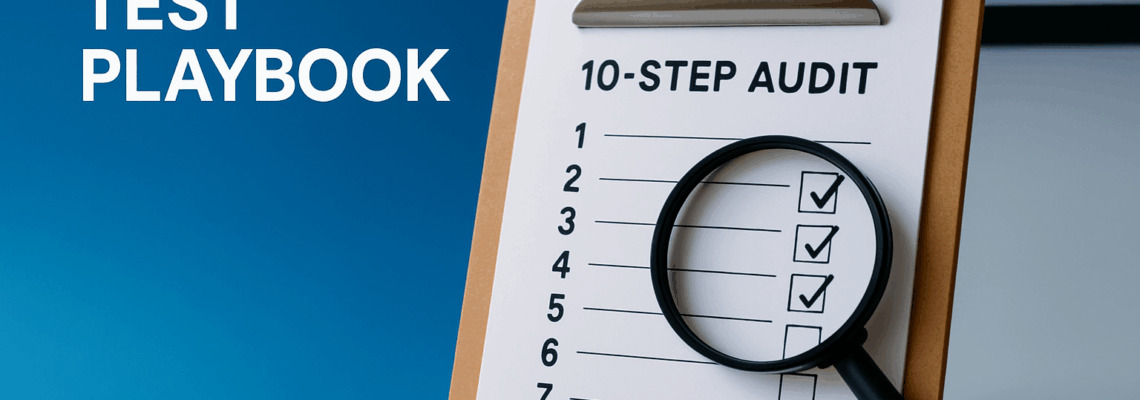If you have ever wondered why a competitor’s listing hogs attention with stars, images, or FAQs (Frequently Asked Questions) while yours stays plain, this guide is your shortcut to change that. The rich result test is your best friend for diagnosing structured data and confirming eligibility for enhanced Search features. Think of it like a preflight checklist for visibility. You run it, discover what Google can render, then fix what is missing or broken so you can earn rich results and earn more clicks. I will show you exactly how Internetzone I uses this process to uncover quick wins for clients and turn “meh” listings into magnetic results.
Before we dive in, a tiny mindset shift helps. The rich result test does not “grant” rich results; it validates eligibility, and eligibility is your invitation to the party. What gets you on the dance floor is quality content, clean markup, and a site that Google trusts. At Internetzone I, we combine National and Local SEO (Search Engine Optimization), technical site audits, and schema strategy to stack the odds in your favor. Ready to run a simple, repeatable playbook that reliably surfaces opportunities and fixes? Let’s open the toolbox and get you those attention-grabbing enhancements.
What Is the Rich Result Test and Why It Matters
The rich result test is a Google tool that evaluates your structured data and previews how eligible enhancements might appear on a Search Engine Results Page (SERP) listing. It supports JSON-LD (JavaScript Object Notation for Linked Data), RDFa (Resource Description Framework in Attributes), and Microdata, and it can test a full page address or a code snippet in seconds. You can also select user agents like smartphone or desktop; smartphone is the default, which matches how most people browse today. The test highlights detected item types, passes, and errors so you can fix issues before you rely on crawling and indexing cycles.
Why does this matter for your bottom line? Multiple industry studies show listings with rich results often earn 20 to 30 percent higher click-through rates, depending on vertical and intent. Stars on a product page can nudge a shopper to choose you. FAQs (Frequently Asked Questions) under a service page can answer hesitations and speed up conversions. And for local businesses, markup for addresses and reviews helps reinforce credibility. Internetzone I leverages these gains across National and Local SEO (Search Engine Optimization) by pairing relevant schema with content that genuinely satisfies the query. Eligibility is not a guarantee, but, combined with trust signals, it is a powerful lever for growth.
| Schema Type | Likely Search Feature | Great For | Business Outcome |
|---|---|---|---|
| Product | Review Snippets, Price, Availability | Retail and eCommerce | Higher intent clicks and conversions |
| FAQPage | FAQ Rich Results | Service and SaaS | Objection handling on the SERP (Search Engine Results Page) |
| HowTo | Step-by-Step Rich Results | DIY, Home Services, Tutorials | Dominating instructional queries |
| LocalBusiness | Knowledge Panel Enrichment | National brands with local presence | Calls, directions, and store visits |
| Event | Event Listings | Venues, Conferences, Classes | Faster discovery and attendance |
| Recipe | Recipe Cards | Food Publishers | Engagement and repeat visitors |
Rich Result Test Readiness: Schema Types, Data, and Eligibility
Eligibility starts with the basics: matching the right schema type to the intent of the page and providing complete, accurate properties. The rich result test flags missing required fields, but you will go faster when you prepare. For example, a Product page needs brand, offers, and review data if you want ratings to appear. A FAQPage needs visible questions and answers in the HTML (HyperText Markup Language), not just in code. And LocalBusiness should reflect consistent NAP (Name, Address, Phone number) and hours that match your profiles. Internetzone I front-loads these details during content and web design planning so your markup aligns with what searchers actually see.
Watch This Helpful Video
To help you better understand rich result test, we’ve included this informative video from Google Search Central. It provides valuable insights and visual demonstrations that complement the written content.
Here is a lightweight checklist we use before running the tool. First, confirm your content makes sense without schema; markup amplifies, it does not replace substance. Second, make sure your page resources are publicly accessible; the tool cannot fetch assets behind a firewall or a password. Third, choose the correct user agent in the tool; smartphone is the default and usually the best choice. Finally, test both the page address and code snippets when you are iterating. This workflow reduces false alarms and speeds up debugging on complex templates.
| Schema Type | Key Required Properties | Pro Tip |
|---|---|---|
| Product | name, image, offers.price, offers.availability, review or aggregateRating | Sync price and availability with your CMS (Content Management System) |
| FAQPage | mainEntity with Question and acceptedAnswer | Questions and answers must be visible on the page |
| HowTo | name, step, image; totalTime when applicable | Add time and tools to improve usefulness |
| LocalBusiness | name, address, telephone, openingHours | Keep NAP (Name, Address, Phone number) consistent across the web |
| Event | name, startDate, location, offers | Use valid time zones and future dates |
10-Step Rich Result Test Audit Playbook
Time to make this practical. The framework below is exactly how Internetzone I runs audits for clients across National and Local SEO (Search Engine Optimization), eCommerce builds, and redesigns. Follow the steps in order; you will move from discovery to fixes to validation without chasing your tail. Keep a running log of what you test, break, and repair; it becomes your living documentation for repeatable wins and team handoffs.
-
Inventory Your Templates and URLs (Uniform Resource Locators)
List every template that should earn enhancements: product, category, service, blog, location, and event. Prioritize by traffic and revenue potential; start where a small lift yields outsized returns. For each template, document current schema types in use, gaps versus eligibility guidelines, and content that needs to be added to make markup truthful. A simple spreadsheet keeps stakeholders aligned and makes your fixes measurable.
-
Map Schema Types to Intent
Every page deserves the schema type that mirrors its purpose. Product pages get Product; location pages get LocalBusiness; tutorials get HowTo; Q and A content gets FAQPage. Avoid stacking unrelated types just to chase features; Google is vigilant about spam. When in doubt, choose one primary type and enrich it deeply. Internetzone I often runs quick audience interviews to ensure the markup matches what searchers actually want to see.
-
Implement JSON-LD (JavaScript Object Notation for Linked Data) First
JSON-LD is the safest, most maintainable format for most sites. It keeps markup out of your visible HTML (HyperText Markup Language) and is easier to template in a CMS (Content Management System). For enterprise teams, place snippets in a centralized include so updates propagate across thousands of pages. Add only properties that reflect on-page content and data you can keep fresh. A lean, accurate object beats a bloated, stale one.
-
Run a Public Fetch
Open the rich result test and test the full page address. If your site is staging-only or behind a firewall, expose a secure tunnel or use a temporary public link; the tool must fetch scripts and images to validate. Toggle the smartphone user agent to mirror real usage. If some resources fail, fix robots.txt rules, header security policies, or hosting blocks before you interpret any schema errors.
-
Validate Required and Recommended Properties
Review the tool’s results, starting with critical errors that block eligibility. Then address warnings; while not always mandatory, they can limit enhancements or reduce quality. Track each property you add back to the source of truth: product feed, PIM, CMS (Content Management System), or analytics repository. Consistency keeps your markup stable when the site evolves.
-
Preview the Enhancement and Compare to the SERP (Search Engine Results Page)
Use the tool’s preview to see how your listing might appear. Then search the target query to compare against live competitors. Are they showing reviews, price, and availability; are you missing any element that would tip a click your way. Internetzone I captures side-by-side screenshots in the project log so stakeholders can see the business case clearly.
-
Fix Content–Markup Mismatches
Rich results must reflect visible content. If your schema shows five-star ratings but the page has no reviews, you are flirting with penalties. Add the missing on-page elements or remove the properties from the JSON-LD (JavaScript Object Notation for Linked Data). Likewise, ensure titles, authors, and dates line up. The most common wins come from aligning real content, not just stuffing code.
-
Retest With Code Snippets
When iterating, paste just the schema object into the tool and use “code snippet” mode for rapid feedback. This isolates issues outside your page template and speeds up collaboration between developers and marketers. Once the snippet passes, push the change into the template and rerun the full page address test. Document before and after states with timestamps to track progress.
-
Ship, Crawl, and Monitor
After deployment, request indexing in Google Search Console or wait for natural crawling. Monitor enhancement reports and performance metrics tied to the affected pages. Watch impressions and click-through rate as early indicators while rankings settle. Internetzone I sets up dashboards so you see which templates and locations are winning and which need a second pass.
-
Scale to Additional Templates
With one template dialed in, expand to the next. Reuse your snippets, add properties unique to the template, and train content teams to maintain visible elements that support the markup. This is where National and Local SEO (Search Engine Optimization) compounding kicks in: every new template that earns enhancements multiplies your surface area for high-intent clicks.
Common Errors and How to Fix Them Fast
Most schema issues fall into a few predictable buckets. The rich result test phrases them in technical language, but the fixes are straightforward. Start with the errors blocking eligibility; then address warnings that limit coverage. Keep your changes honest; the fastest way to lose trust is to mark up content that people cannot see or that contradicts on-page claims. Below is a quick-reference table our team at Internetzone I uses during live fixes.
| Error Message | Meaning | Fast Fix | Priority |
|---|---|---|---|
| Missing field “name” | Required identity is absent for the item | Map product or page title to the name property | High |
| Invalid object type | Wrong schema type for the page purpose | Switch to Product, LocalBusiness, FAQPage, or correct type | High |
| Image URL (Uniform Resource Locator) not crawlable | Blocked or broken image resource | Fix robots rules or image path; use absolute addresses | Medium |
| Review markup not supported | Self-serving or disallowed rating use | Remove reviews or collect third-party ratings where allowed | Medium |
| Invalid date format | Dates not in ISO 8601 | Update to standardized timestamp like 2025-11-18 | Low |
- If a resource is blocked, confirm your content delivery network and security headers allow Googlebot to fetch it.
- When you see “invalid value,” check for typos, illegal characters, or unit mismatches like currency codes.
- For template-wide issues, fix the include file once rather than editing page-by-page.
Pro Tips, Tools, and Templates for Teams
The rich result test is essential, but pairing it with other tools gives you a panoramic view. Use Google Search Console enhancement reports for indexing-scale issues and historical trends. Use Schema Markup Validator to confirm syntax beyond what powers rich results. And keep a lightweight internal checklist template so anyone on your team can run a credible audit in under an hour. Internetzone I includes these templates in our Managed Web Services to keep momentum between sprints.
| Tool | Best For | When to Use | Limitations |
|---|---|---|---|
| Rich Result Test | Eligibility and preview | Before deploy; after changes | Does not guarantee appearance |
| Search Console | Coverage and performance | Post-deploy monitoring | Aggregated; slower feedback |
| Schema Markup Validator | Syntax validation | Debug mixed formats | No preview of Search features |
Want a quick example of impact. A regional retailer came to Internetzone I with flat organic clicks and confusing product templates. We mapped schema to intent, implemented JSON-LD (JavaScript Object Notation for Linked Data) with clean offer data, and ran the rich result test to validate every template. Within eight weeks, product listings began showing ratings and price more consistently. Click-through rate rose by 28 percent on top 40 products, and revenue per session improved thanks to higher-intent traffic. We reinforced the changes with Reputation Management and Adwords-Certified PPC (Pay-Per-Click) Services to capture demand the moment shoppers were ready.
What Happens After You Pass Every Rich Result Test
This playbook gives you a reliable way to fix schema, validate eligibility, and earn more clicks fast. In the next 12 months, small compounding gains from better enhancements can snowball into market share. Imagine your products, services, and locations standing out again and again, without inflating ad spend.
So, what will you do differently the next time you ship a template or publish a page. Will you run a rich result test before you hit go and let real previews guide your roadmap.
Additional Resources
Explore these authoritative resources to dive deeper into rich result test.
Maximize Rich Result Test Wins With Internetzone I
Boost eligibility, visibility, and conversions with National & Local SEO (Search Engine Optimization) guided by Internetzone I for companies seeking stronger digital growth.


